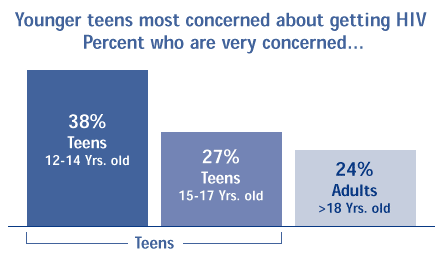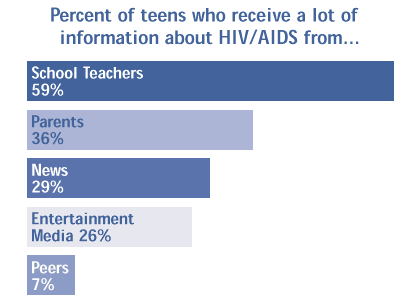New Estimate of Annual Cases of Sexually Transmitted Diseases in US:
STD Epidemic Bigger Than Previously Thought, But Experts Say There Is “Good News” That Higher Estimate Result Of Improved Detection
Two STDs — HPV and Trichomoniasis — Account for Two Thirds of New Cases; Cost to Treat Current Infections in U.S. Estimated at $8.4 Billion Per Year
Embargoed For Release Until: 9:30 A.M. ET, Wednesday, December 2, 1998
New York, NY – A panel of some of the nation’s leading health experts convened by the American Social Health Association (ASHA) for the Kaiser Family Foundation estimates that 15.3 million new cases of sexually transmitted diseases (STDs) occurred in the U.S. in 1996. This new estimate exceeds by three million new infections per year the previously most often cited figure from a decade earlier. However, in their report the panel concludes that the higher number is “mainly because of improved detection techniques [that] have made it possible to identify asymptomatic (“silent”) infections that were undercounted in the past,” and that the new estimate most likely reflects a slight decrease overall in the actual number of STDs when previous under-estimation is taken into account.
In the mid-1980s, the Centers for Disease Control and Prevention (CDC) placed the number of new STD cases at approximately 12 million per year. This update is the first to apply a rigorous methodology to calculate the annual STD incidence overall since that estimate.
More than two thirds of the 15.3 million STDs that occurred in 1996 were attributable to sharp increases in the estimates of two infections — human papillomavirus (HPV) and trichomoniasis — which according to the panel went up as a result of new detection and better estimation methods. The incidences of the three STDs that have formal national surveillances — chlamydia, gonorrhea, and syphilis — were found to have fallen, due in large part to national control programs. The panel also examined trends with known sexual transmissions of herpes, hepatitis B virus, and HIV/AIDS, which were generally found to be holding steady over the last decade.
The panel acknowledged that a variety of factors including the asymptomatic nature of many of the diseases, social stigma, inconsistent reporting, and lack of public awareness make determination of the incidence and prevalence of STDs in the U.S. very difficult. However, this new estimate reflects the best information based on available data.
“Better detection offers a greater opportunity to treat and ultimately stem the spread of STDs, but it has also shown that the epidemic is bigger than previously thought” said Ward Cates, M.D., M.P.H., President, Family Health International and chair of the study’s expert panel.
The health consequences of a particular STD may vary depending on a number of factors, including how early it is detected and treated, but can include an increased risk of certain cancers and HIV, and for women problems with future pregnancies and infertility. There are two general types of STDs: those that are bacterial or curable (chlamydia, trichomoniasis, gonorrhea, and syphilis), and those that are viral or incurable (HPV, genital herpes, hepatitis B virus, and HIV). Antibiotics can cure bacterial infections and treatments are available that can help reduce the frequency of outbreaks of some viral STDs. Direct medical costs for treatment of all estimated cases is determined by the panel to be $8.4 billion per year in the U.S.
The panel estimated cumulative totals for the four viral STDs, which once infected a person has for life: as a result of known sexual transmission in 1996, there were estimated to be 45 million Americans with herpes, 20 million with HPV, 750,000 with hepatitis B, and 560,000 with HIV.
“Silent infections, along with shame and national shyness have made the STD epidemic a dangerous secret. Men and women who are unaware of their infections needlessly risk their own health and the health of their partners,” said Felicia H. Stewart, MD, Director of Reproductive Health Programs, Kaiser Family Foundation.
A Silent Epidemic: On December 1st, World AIDS Day focused worldwide attention on the deadliest of sexually transmitted diseases. Yet, many Americans remain unaware, or misinformed, about other STDs, including their personal risk and the link to HIV. According to a recent national survey by the Kaiser Family Foundation and Glamour magazine, lack of awareness about STDs presents a significant public health threat. Most men and women of “reproductive age” (18-44 years old) seriously underestimate how common non-HIV STDs are, and many are not even aware of some of the most common ones. As a result, very few believe they are at risk: only 14 percent of men, and even fewer of women (8%), who were surveyed consider themselves at risk of getting an STD.
Methodology
The American Social Health Association (ASHA) convened for the Kaiser Family Foundation a panel of 11 of the nation’s leading experts, including representatives from the Centers for Disease Control and Prevention, state and local public health agencies, prominent public health researchers and academicians, and practicing clinicians, to update the estimates of the annual incidence, prevalence, and cost of sexually transmitted diseases in the U.S. The panel examined all available published literature, developed a methodology for assessing the strength of various data, and came to consensus through a deliberative process on the new national estimates.
The Kaiser Family Foundation, based in Menlo Park, California, is an independent national health care philanthropy and is not associated with Kaiser Permanente or Kaiser Industries.
Founded in 1914, the American Social Health Association is a national non-profit organization dedicated to stopping sexually transmitted diseases and their harmful consequences to individuals, families, and communities.
Sexually Transmitted Diseases in America: How Many Cases and at What Cost?, a report prepared for the Kaiser Family Foundation by the American Social Health Association (ASHA), will be presented at the upcoming National STD Prevention Conference sponsored by the Centers for Disease Control and Prevention and ASHA in Dallas (December 6-9). It is being released today at a briefing in New York to take a more in-depth look at the state of the STD epidemic in the U.S., and what is happening and why with specific diseases. This briefing is part of an ongoing series, Emerging Issues in Reproductive Health, sponsored by the Kaiser Family Foundation, The Alan Guttmacher Institute, and National Press Foundation.
Findings from recent Foundation surveys on public awareness, knowledge and experience with STDs is also available (#1423). See our fact sheet on Sexually Transmitted Diseases for more information on some of the most common STDs.
Return to top
Sexually Transmitted Diseases In America: How Many and at What Cost?:Press Release Report (in PDF Format)
The Tip Of The Iceberg: How Big Is The STD Epidemic In The U.S.?Fact Sheet Q & A Resource List

